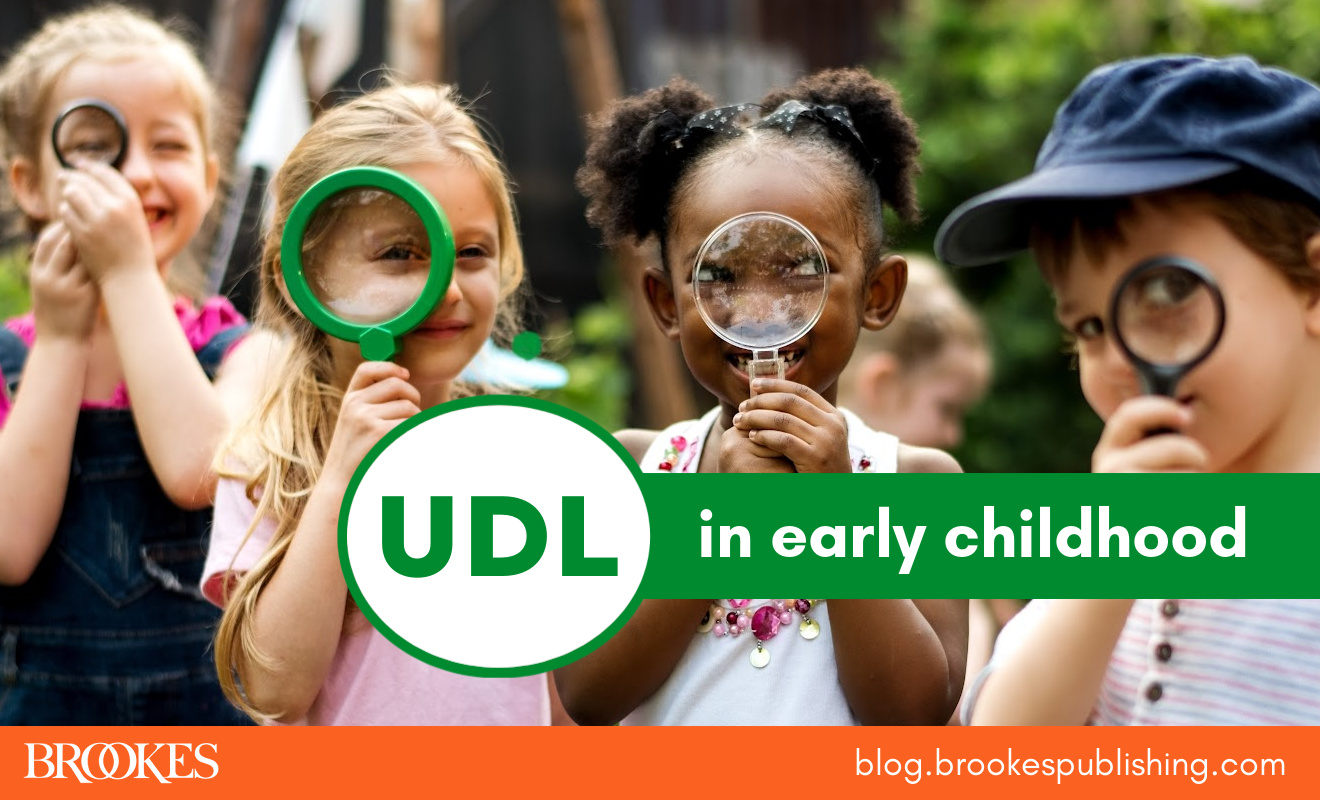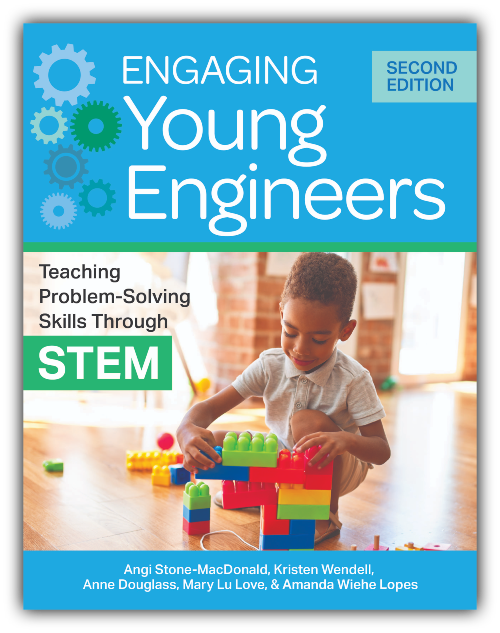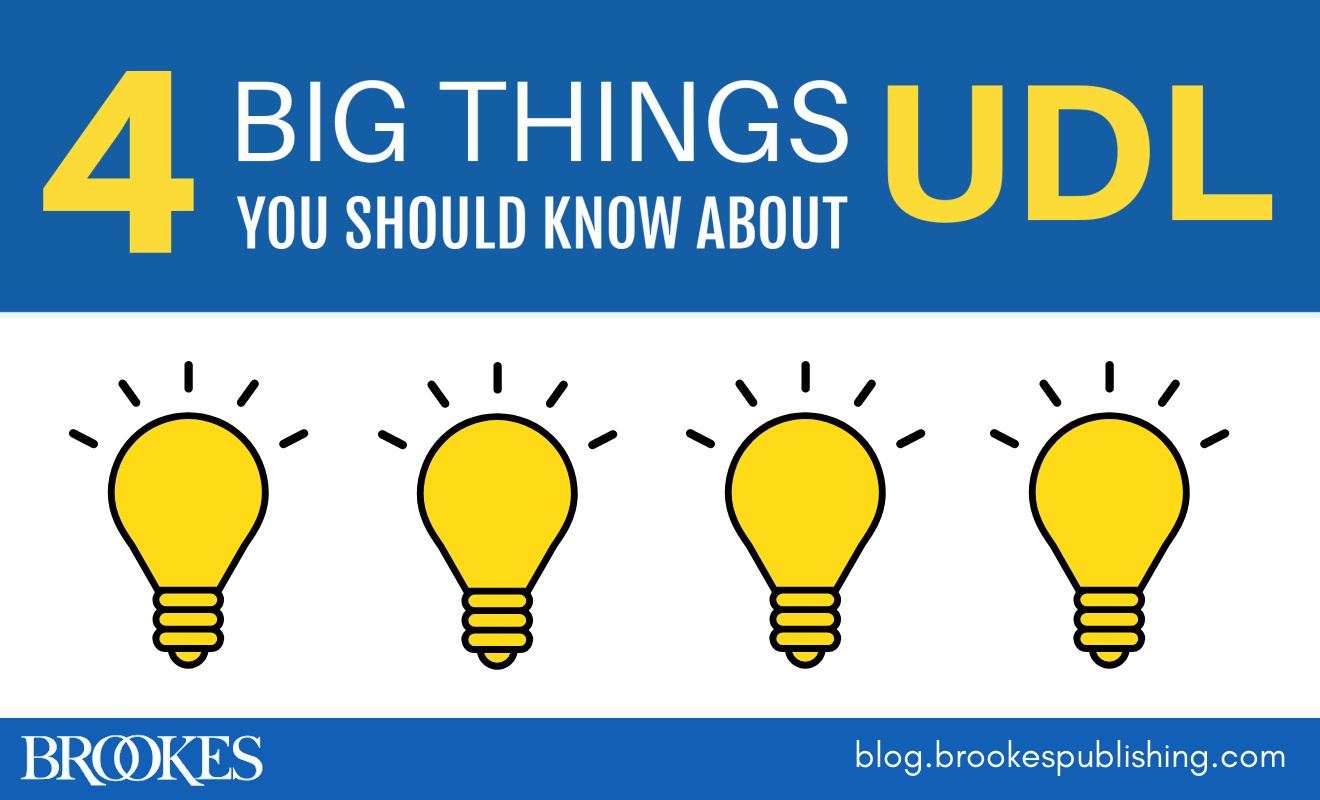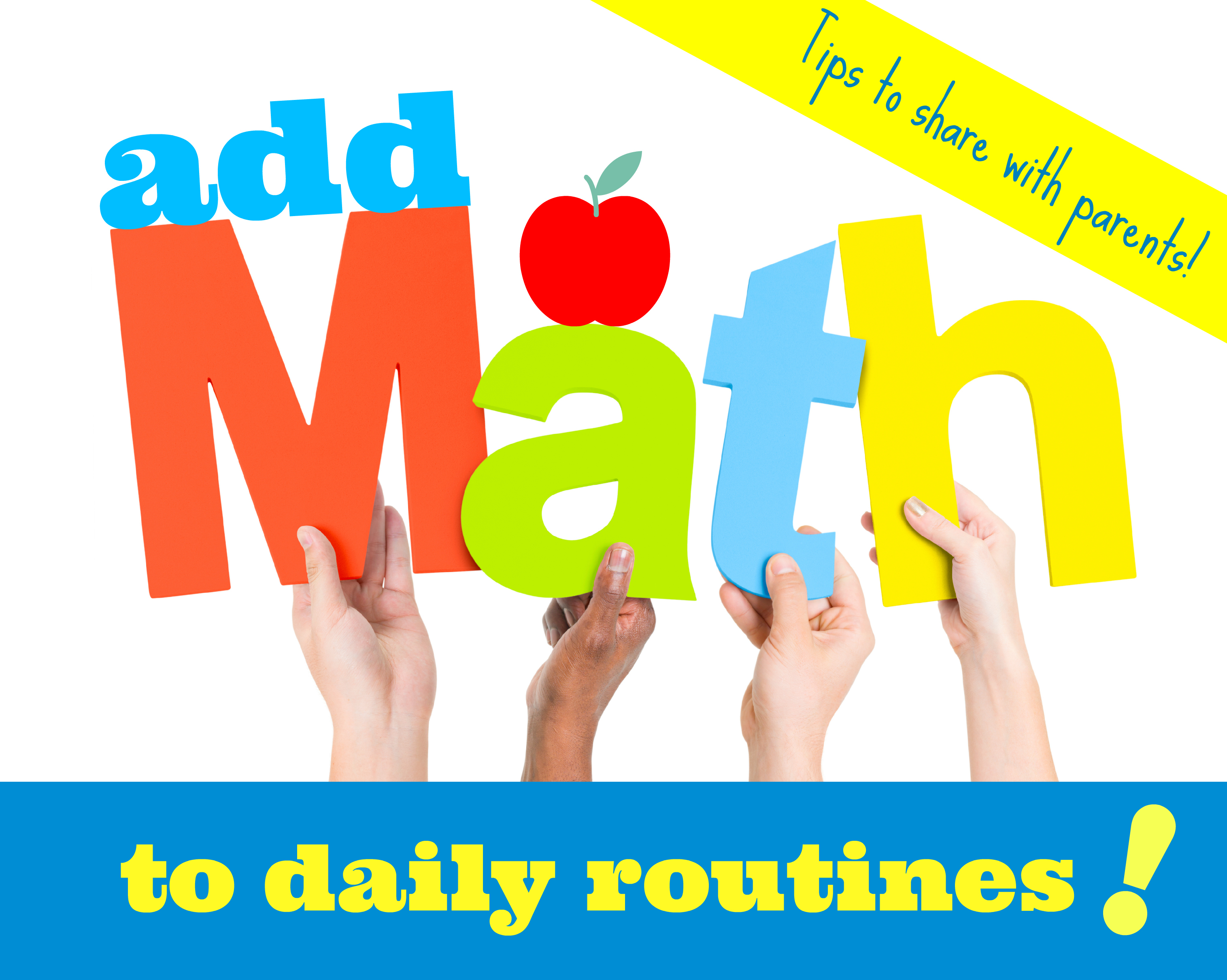Getting Started with UDL in Early Childhood
May 7, 2024
*Today’s blog post has been adapted from the second edition of Engaging Young Engineers.
Applying Universal Design for Learning (UDL) principles is one way to ensure that all children in your program have access to high-quality learning experiences. Though the UDL framework has historically been applied to K–12 education, the three core UDL principles can easily support children from birth to age 5 in inclusive settings. The three principles are:
- Multiple Means of Representation (What?). This principle focuses on what children are learning and the inputs or content provided to help children learn various concepts. Children are provided various options to engage in the content, including auditory, visual, tactile, and multimodal learning opportunities.
- Multiple Means of Action and Expression (How?). This principle centers on the process of learning. Children can gain information through a variety of learning activities, each of which highlights different learning modalities. Children can also show what they have learned, and adults can assess the teaching and learning process in many different ways.
- Multiple Means of Engagement (Why?). In this principle, children are engaged in the learning process through their interests, and teachers must find the right level of challenge for each child. By tapping into children’s natural interest areas, teachers can focus on the curriculum and learning objectives rather than using time to gain and sustain children’s attention.
Key Questions for Getting Started with UDL
UDL requires planning. Think about all the different ways young children might have difficulty accessing a lesson, and offer many choices to make sure that all children can access the thinking skill and the goal of the lesson. A UDL classroom is flexible—all children have the opportunity to participate in the same lesson, but they complete the activity in different ways and demonstrate their learning in different ways.
Use these questions as a starting point as you plan UDL supports for infants, toddlers, and preschoolers in your early childhood program. (Keep in mind that while UDL supports are usually chosen because of the needs of a specific child, they should be available to all children.)
Infants
- Are you providing several different materials of the same type to explore the concept (e.g., several different thicknesses of balls, several different sizes and textures of balls)?
- Do infants have several opportunities to try to repeat the activity?
- Are infants able to use more than one sense to explore the activity or concept?
- Are you using media to document the infants’ learning? Are you showing the infants pictures of their participation and recalling the activities?
- Are the materials accessible with scaffolds based on the mobility of the infants?
- Are you incorporating preferred activities, toys, or adults?
- Are you asking infants to complete the activities when they are well rested and fed?
- Do infants have communication tools (e.g., words, pictures, picture symbols, talking device, sign language)?
Toddlers
- Do toddlers have a choice of materials and activities?
- Do toddlers have the necessary supports for communication about the activity (e.g., words, pictures, picture symbols, talking device, sign language)?
- Are you using media to document the toddlers’ activities and sharing the media with them to recall and reflect?
- Is the environment distraction free and set up with choices?
- Are you using multiple modes of assessment, such as photographs, checklists, and discussion with the children?
- Do toddlers have options for how to do the activity?
- Are you incorporating preferred items, reinforcers, or adults to support the toddlers?
Preschoolers
- Do children have a choice of materials and activities?
- Do children have the necessary supports for communication about the activity (e.g., words, pictures, picture symbols, talking device, sign language)?
- Are you using media to document the preschoolers’ activities and sharing the media with them to recall and reflect? Are they creating an ongoing journal to document their learning in multiple ways, including words, drawings, photographs, videos, and artifacts?
- Is the environment set up with limited distractions and choices (when needed)?
- Are you using multiple modes of assessment to assess their products, processes, and thinking skill development?
- Do preschoolers have options for how to do the activity and what they can create?
- Are children given constraints or limits and asked to redesign to stretch their thinking or use a different material or method?
- Are you incorporating preferred items, reinforcers, or adults to support the children?
All young children—regardless of their support needs, developmental status, home language, or socioeconomic status—have the right to participate in rich, engaging learning experiences. For more on using UDL principles to ensure that learning experiences work for all children, see the second edition of Engaging Young Engineers, a practical guide that helps you get all children ready for kindergarten by teaching them basic practices of engineering design and critical thinking skills. You’ll get tips and strategies, an Early Childhood UDL Planning Sheet, lesson plans, and more!





Write a Comment
Your email address will not be published. Required fields are marked *
Post a Comment